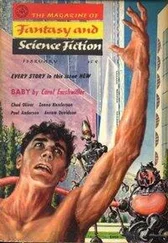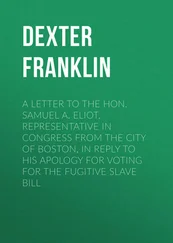Oliver Sacks - The man who mistook his wife for a hat
Здесь есть возможность читать онлайн «Oliver Sacks - The man who mistook his wife for a hat» весь текст электронной книги совершенно бесплатно (целиком полную версию без сокращений). В некоторых случаях можно слушать аудио, скачать через торрент в формате fb2 и присутствует краткое содержание. Жанр: Психология, на английском языке. Описание произведения, (предисловие) а так же отзывы посетителей доступны на портале библиотеки ЛибКат.
- Название:The man who mistook his wife for a hat
- Автор:
- Жанр:
- Год:неизвестен
- ISBN:нет данных
- Рейтинг книги:5 / 5. Голосов: 1
-
Избранное:Добавить в избранное
- Отзывы:
-
Ваша оценка:
- 100
- 1
- 2
- 3
- 4
- 5
The man who mistook his wife for a hat: краткое содержание, описание и аннотация
Предлагаем к чтению аннотацию, описание, краткое содержание или предисловие (зависит от того, что написал сам автор книги «The man who mistook his wife for a hat»). Если вы не нашли необходимую информацию о книге — напишите в комментариях, мы постараемся отыскать её.
The man who mistook his wife for a hat — читать онлайн бесплатно полную книгу (весь текст) целиком
Ниже представлен текст книги, разбитый по страницам. Система сохранения места последней прочитанной страницы, позволяет с удобством читать онлайн бесплатно книгу «The man who mistook his wife for a hat», без необходимости каждый раз заново искать на чём Вы остановились. Поставьте закладку, и сможете в любой момент перейти на страницу, на которой закончили чтение.
Интервал:
Закладка:
One always fears that a case is 'unique', especially if it has such
extraordinary features as those of Dr P. It was, therefore, with a sense of great interest and delight, not unmixed with relief, that I found, quite by chance-looking through the periodical Brain for 1956-a detailed description of an almost comically similar case, similar (indeed identical) neuropsychologically and phenomeno-logically, though the underlying pathology (an acute head injury) and all personal circumstances were wholly different. The authors speak of their case as 'unique in the documented history of this disorder'-and evidently experienced, as I did, amazement at their own findings. * The interested reader is referred to the original paper, Macrae and Trolle (1956), of which I here subjoin a brief paraphrase, with quotations from the original.
Their patient was a young man of 32, who, following a severe automobile accident, with unconsciousness for three weeks, '. . . complained, exclusively, of an inability to recognise faces, even those of his wife and children'. Not a single face was 'familiar' to him, but there were three he could identify; these were workmates: one with an eye-blinking tic, one with a large mole on his cheek, and a third 'because he was so tall and thin that no one else was like him'. Each of these, Macrae and Trolle bring out, was 'recognised solely by the single prominent feature mentioned'. In general (like Dr P.) he recognised familiars only by their voices.
He had difficulty even recognising himself in a mirror, as Macrae and Trolle describe in detail: 'In the early convalescent phase he frequently, especially when shaving, questioned whether the face gazing at him was really his own, and even though he knew
*Only since the completion of this book have I found that there is, in fact, a rather extensive literature on visual agnosia in general, and prosopagnosia in particular. In particular I had the great pleasure recently of meeting Dr Andrew Kertesz, who has himself published some extremely detailed studies of patients with such agnosias (see, for example, his paper on visual agnosia, Kertesz 1979). Dr Kertesz mentioned to me a case known to him of a farmer who had developed prosopagnosia and in consequence could no longer distinguish (the faces of) his cows, and of another such patient, an attendant in a Natural History Museum, who mistook his own reflection for the diorama of an ape. As with Dr P., and as with Macrae and Trolle's patient, it is especially the animate which is so absurdly misperceived. The most important studies of such agnosias, and of visual processing in general, are now being undertaken by A. R. and H. Damasio (see article in Mesulam [1985], pp. 259-288; or see p. 79 below).
it could physically be none other, on several occasions grimaced or stuck out his tongue "just to make sure." By carefully studying his face in the mirror he slowly began to recognise it, but "not in a flash" as in the past-he relied on the hair and facial outline, and on two small moles on his left cheek.'
In general he could not recognise objects 'at a glance', but would have to seek out, and guess from, one or two features- occasionally his guesses were absurdly wrong. In particular, the authors note, there was difficulty with the animate.
On the other hand, simple schematic objects-scissors, watch, key, etc.-presented no difficulties. Macrae and Trolle also note that: 'His topographical memory was strange: the seeming paradox existed that he could find his way from home to hospital and around the hospital, but yet could not name streets en route [unlike Dr P., he also had some aphasia] or appear to visualize the topography.'
It was also evident that visual memories of people, even from long before the accident, were severely impaired-there was memory of conduct, or perhaps a mannerism, but not of visual appearance or face. Similarly, it appeared, when he was questioned closely, that he no longer had visual images in his dreams. Thus, as with Dr P., it was not just visual perception, but visual imagination and memory, the fundamental powers of visual representation, which were essentially damaged in this patient-at least those powers insofar as they pertained to the personal, the familiar, the concrete.
A final, humorous point. Where Dr P. might mistake his wife for a hat, Macrae's patient, also unable to recognise his wife, needed her to identify herself by a visual marker, by '. . . a conspicuous article of clothing, such as a large hat'.
2
The Lost Mariner*
You have to begin to lose your memory, if only in bits and pieces, to realise that memory is what makes our lives. Life without memory is no life at all . . . Our memory is our coherence, our reason, our feeling, even our action. Without it, we are nothing … (I can only wait for the final amnesia, the one that can erase an entire life, as it did my mother's . . .)
–Luis Bunuel
This moving and frightening segment in Bunuel's recently translated memoirs raises fundamental questions-clinical, practical, existential, philosophical: what sort of a life (if any), what sort of a world, what sort of a self, can be preserved in a man who has lost the greater part of his memory and, with this, his past, and his moorings in time?
It immediately made me think of a patient of mine in whom these questions are precisely exemplified: charming, intelligent, memoryless Jimmie G., who was admitted to our Home for the
*After writing and publishing this history I embarked with Dr Elkhonon Goldberg- a pupil of Luria and editor of the original (Russian) edition of The Neuropsychology of Memory -on a close and systematic neuropsychological study of this patient. Dr Goldberg has presented some of the preliminary findings at conferences, and we hope in due course to publish a full account.
A deeply moving and extraordinary film about a patient with a profound amnesia (Prisoner of Consciousness), made by Dr Jonathan Miller, has just been shown in England (September 1986). A film has also been made (by Hilary Lawson) with a prosopagnosic patient (with many similarities to Dr P.). Such films are crucial to assist the imagination: 'What can be shown cannot be said.'
Aged near New York City early in 1975, with a cryptic transfer note saying, 'Helpless, demented, confused and disoriented.'
Jimmie was a fine-looking man, with a curly bush of grey hair, a healthy and handsome forty-nine-year-old. He was cheerful, friendly, and warm.
'Hiya, Doc!' he said. 'Nice morning! Do I take this chair here?' He was a genial soul, very ready to talk and to answer any questions I asked him. He told me his name and birth date, and the name of the little town in Connecticut where he was born. He described it in affectionate detail, even drew me a map. He spoke of the houses where his family had lived-he remembered their phone numbers still. He spoke of school and school days, the friends he'd had, and his special fondness for mathematics and science. He talked with enthusiasm of his days in the navy-he was seventeen, had just graduated from high school when he was drafted in 1943. With his good engineering mind he was a 'natural' for radio and electronics, and after a crash course in Texas found himself assistant radio operator on a submarine. He remembered the names of various submarines on which he had served, their missions, where they were stationed, the names of his shipmates. He remembered Morse code, and was still fluent in Morse tapping and touch-typing.
A full and interesting early life, remembered vividly, in detail, with affection. But there, for some reason, his reminiscences stopped. He recalled, and almost relived, his war days and service, the end of the war, and his thoughts for the future. He had come to love the navy, thought he might stay in it. But with the GI Bill, and support, he felt he might do best to go to college. His older brother was in accountancy school and engaged to a girl, a 'real beauty', from Oregon.
Читать дальшеИнтервал:
Закладка:
Похожие книги на «The man who mistook his wife for a hat»
Представляем Вашему вниманию похожие книги на «The man who mistook his wife for a hat» списком для выбора. Мы отобрали схожую по названию и смыслу литературу в надежде предоставить читателям больше вариантов отыскать новые, интересные, ещё непрочитанные произведения.
Обсуждение, отзывы о книге «The man who mistook his wife for a hat» и просто собственные мнения читателей. Оставьте ваши комментарии, напишите, что Вы думаете о произведении, его смысле или главных героях. Укажите что конкретно понравилось, а что нет, и почему Вы так считаете.












